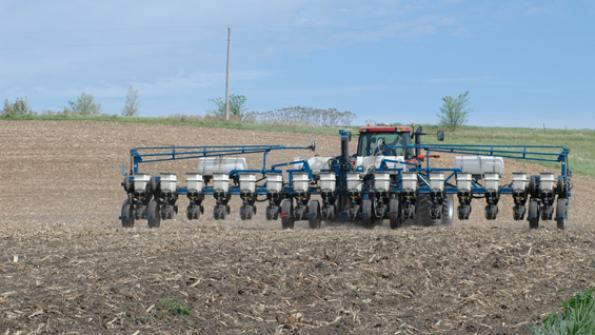March 27, 2012

For many growers, this unusually early spring may offer the earliest opportunity of all time for corn planting. This makes it especially important to weigh the risks and benefits of early planting.
Crop Insurance
For farmers with Federal crop insurance, planting before the earliest allowable planting dates specified by the USDA Risk Management Agency will result in loss of replant coverage, even if the need for replanting is due to factors other than freeze damage or poor emergence. The earliest allowable planting date is April 11 for most counties in Minnesota and April 21 for some northern counties (Beltrami, Carlton, Itasca, Kittson, Koochiching, Lake of the Woods, Marshall, Roseau and St. Louis counties). The earliest allowable planting dates for each county and crop can be found on the Risk Management Agency's website.
Yield
Rarely in Minnesota are soils fit for corn planting prior to the earliest date established for crop insurance. Corn planting date studies from 1988 to 2003 at Lamberton, MN, show that planting dates ranging from April 21 to May 6 produced yields within 1% of the maximum. These results are supported by a recent study from 2009 to 2011 at Lamberton, Morris and Waseca, MN that was funded by the Minnesota Corn Growers Association, in which yield was optimized on average with planting dates of April 25 to May 10. In the 10 instances when planting occurred prior to April 18 in these studies, yields were 82-100% of the maximum (average = 94%). In both studies, rapid decline in corn yield did not occur until planting was delayed beyond mid-May.
Frost Damage
A risk of early planting is frost damage to young corn plants, as experienced in much of Minnesota in 2010. Although the growing point on corn is below the soil surface until the five leaf collar stage (V5), new growth often has trouble emerging through frost-damaged tissue, resulting in buggy-whipped plants. Frost damage to plants that are 6 in. or shorter can reduce yield by 9-15% (Bremer et al., 1995), and is likely related to the subsequent unevenness in the stand and completion among plants. For example, previous research from Lamberton, MN, found that when a corn plant was one leaf stage behind neighboring plants early in the season, its yield was reduced by 20%. In comparison, when a corn plant was two leaf stages behind neighboring plants early in the season, its yield was reduced by 51%.
Corn that is emerging (spiking) is less affected by a freeze than corn at later growth stages (V1 or later). Since corn requires about 155 growing degree days to reach the V1 stage, one can assess the risk of frost damage by using expected air temperatures to calculate growing degree days and project the date at which corn would reach the V1 stage for a given planting date, and then compare that to historical frost-free dates. For most regions in Minnesota, planting dates earlier than April 15 are likely to result in corn plants at the V1 stage or larger prior to the long-term average frost-free dates.
Useful web links for assessing the risk of frost damage:
You May Also Like




